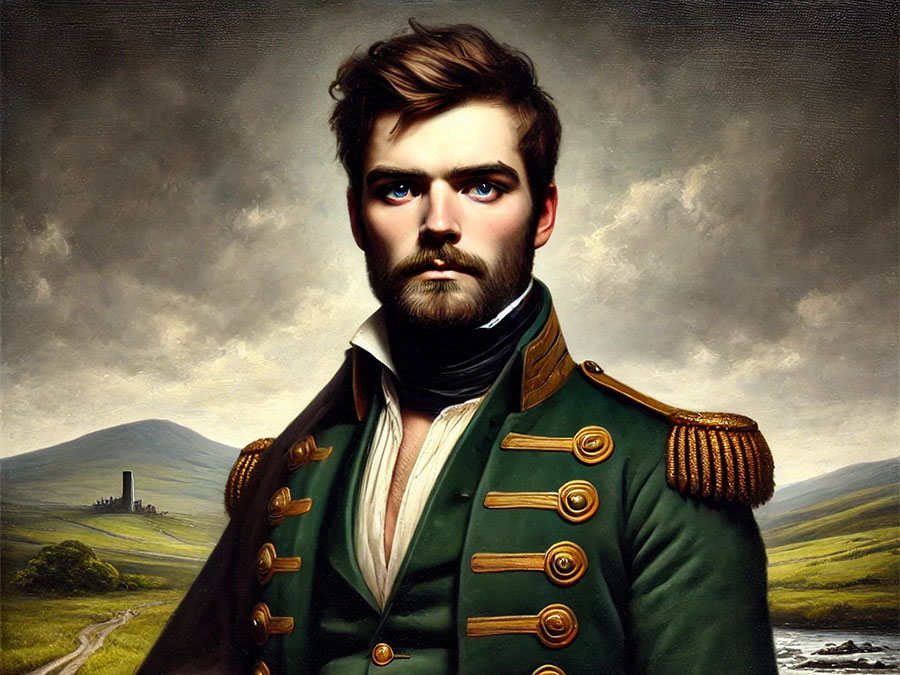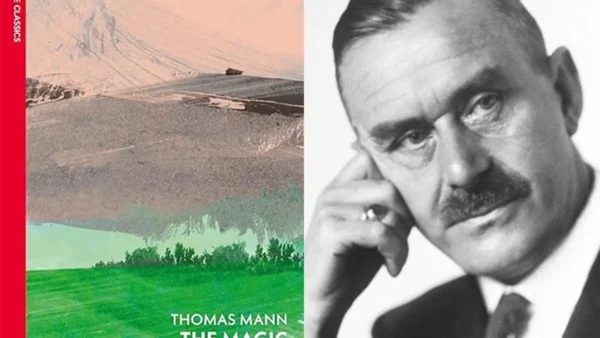Treachery and heroism blur in this meticulously plotted short story by Jorge Luis Borges, with noticeable echoes from history and literature.
In the opening lines of his short story “The Theme of the Traitor and the Hero”, Borges seems to be making it up as he goes along:
“The action takes place in an oppressed yet stubborn country—Poland, Ireland, the republic of Venice, some South American or Balkan state…. Or took place rather, for though the narrator is contemporary, the story told by him occurred in the mid or early nineteenth century—in 1824, let us say, for convenience’s sake; in Ireland, let us also say.”
This turns out, however, to be a meticulously crafted story in which every element exists for a reason and often closely parallels other plots either from famous plays or from real historical events. The purpose of this casual opening, I think, is to throw the reader off guard, to make the plot seem less tightly controlled than it really is.
Borges has been exploring the theme of the traitor and the hero in other stories in his Collected Fictions, most recently “The Shape of the Sword“, in which the narrator appears to be the hero and turns out in the final paragraph to be the traitor. In this story, the roles are blurred even further—the hero and the traitor turn out to be the same person.
That person is Fergus Kilpatrick, an Irish revolutionary hero who is found by his comrades to have betrayed the cause. He is sentenced to death but pleads to be killed in a way that does not harm the cause. One of the other men, James Nolan, comes up with a plan to give Kilpatrick a heroic death which will both redeem him and inspire their followers to continue the rebellion. He will be assassinated in a theatre by an unknown assailant, with suspicion thrown on the English police.
Nolan enlists not just Fergus Kilpatrick but also hundreds of other actors to create a convincing scene. Although Kilpatrick is murdered in a theatre, the true performance takes place over several days across the whole city of Dublin, painting a portrait of a hero going to a tragic death.
In his haste, Nolan plagiarises famous plays such as Macbeth and Julius Caesar, as well as drawing on events from real life. This creates the impression that history is repeating itself or that literature is infusing into life. The mystery is only solved years later, when a man called Ryan, the great-grandson of Kilpatrick, writes a biography of his ancestor and is disturbed by the repetition of events and the similarities between life and literature.
Ryan begins to imagine “some secret shape of time, a pattern of repeating lines.” He thinks of the transmigration of souls, wonders if Kilpatrick was Caesar reincarnated. But further investigation reveals the existence of the plot to make a traitor into a hero. Then comes one of those wonderfully laconic Borges endings:
“After long and stubborn deliberation, he decided to silence the discovery. He published a book dedicated to the hero’s glory; that too, perhaps, had been foreseen.”
It’s a very satisfying story, not because the events or characters are particularly believable or compelling but because of how carefully the mystery is constructed and revealed, how Borges leads us down one path and then shifts to another, keeping us guessing even as he’s leaving little clues for us to discover all along.
Next up in my Borges Marathon is “Death and the Compass”—I hope you’ll join me, either by commenting or by reading the story and writing your own review if you’d like.




There are 8 comments
Your Borges marathon posts inspired me to buy all his short stories. I am out of town, but at one point I want to start reading them. I know in the past I may have read a few of his stories here and there, but a proper reading of his entire collection is due!
Thanks for uncovering the intricacies of his stories, he was such a philosopher and phenomenal writer who excelled in a genre with almost mathematical precision.
I’m glad to hear that, Silvia! I’m enjoying this marathon, and it’s great to hear that it inspired you to read the rest of his stories. Would love to see your thoughts on them.
Nice!
In this one, I also highlighted the multiple references to references: https://wordsandpeace.com/2021/12/27/ficciones-by-jorge-luis-borges-the-form-of-the-sword/
Thanks Emma, will take a look 🙂
I must have read this story, but I didn’t remember that they were the same person! (Maybe I will become less spoilerphobic, if/when my memory deteriorates.)
I’ve recently finished Carlos Fuentes’ Great Latin American Novel (translated via Dalkey Archives, 2011); it took me a few weeks, for only 400p, but it was well worth it. Online I saw that he was criticised for choosing his favourites with contemporaires (which he freely admits) and for too much focus on Mexico (same) and not including enough women writers (still more than I’d expected and some in detail). The single chapter devoted to Borges is lovely, but of course he pops up all over the place (and it’s not indexed). At first, I started to type out a couple of pages with your project in mind, but the whole chapter is just written so nicely, I couldn’t select only certain bits.
Oh, thanks for the recommendation! Sounds like a wonderful book. It’s interesting that there’s a chapter on Borges even though he never wrote a novel, let alone a Great Latin American one, but I suppose it makes sense because of his massive influence on people who did. Would like to read this one, and in the meantime I’ll look out for your thoughts on your blog.
This sounds delicious. Do you think they way he opens the story could be an indication that it could happen anywhere and anytime and he’s asking us to settle on the story of Fitzpatrick? Or is it simply an attempt to unsettle the reader?
Yes, that could be it, Stefanie. I think from his other stories that he mistrusts the idea of heroism and wants to take every opportunity to subvert it. So he might be saying that this is not just a story about one man in one place – in a sense, we are all Fitzpatrick, both hero and traitor.